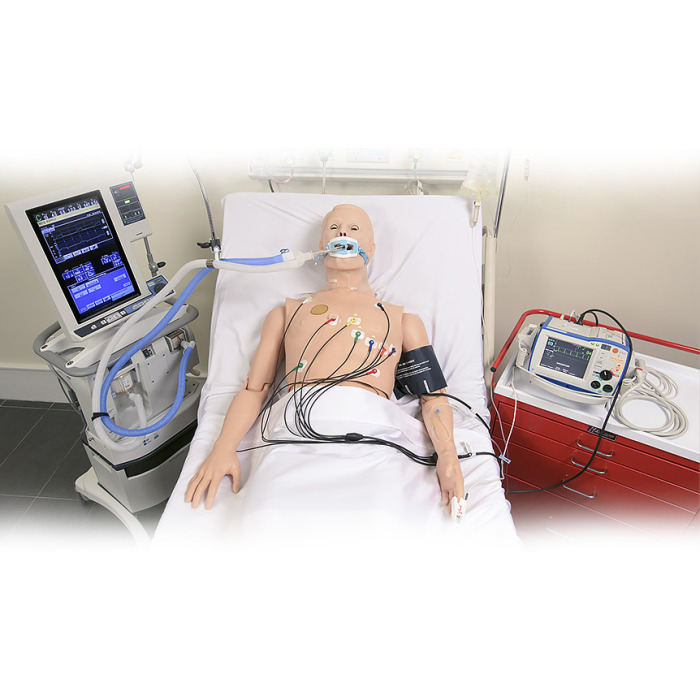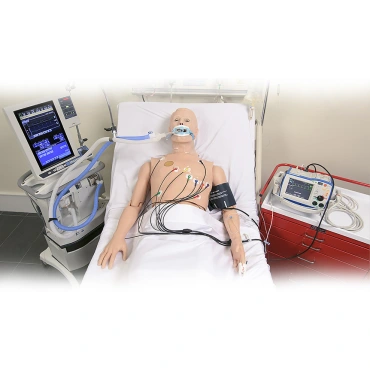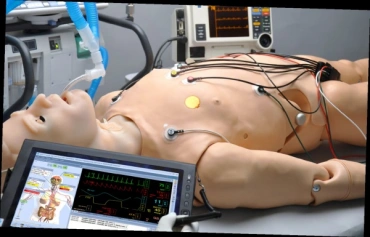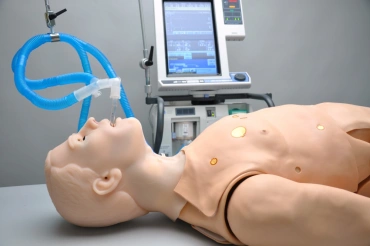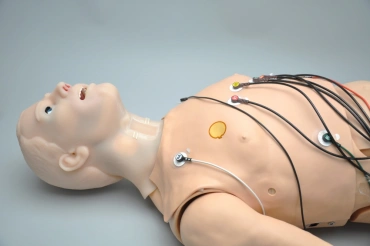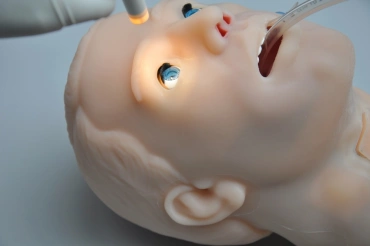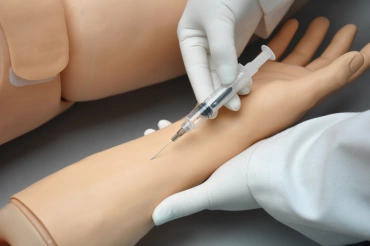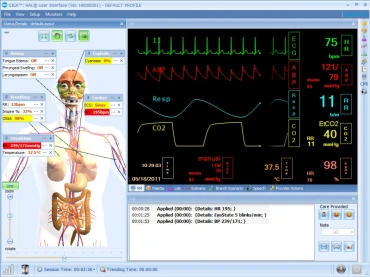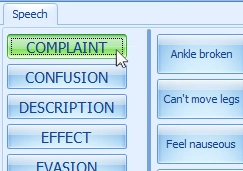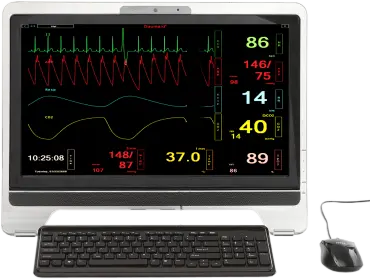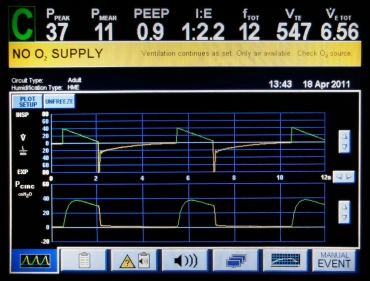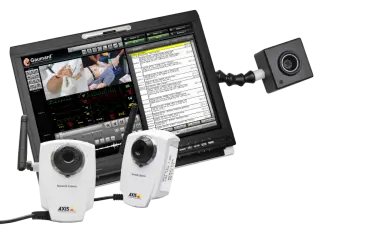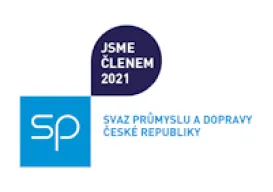HAL® S3201 Advanced Tetherless Patient Simulator
Advanced Multipurpose Patient Simulator
- Programmable airway and lung compliance
- Myocardial infarction modeling
- Automated physiology and drug recognition
- Real monitoring: mechanical ventilators, 12-Lead ECG, AED, oximeters, capnometers, and auto-BP
- Wireless and tetherless mobility for care in motion training
- Includes HAL Simulation Learning Experiences™ scenario package
Streamline your training with the one patient simulator that can do it all. Meet the versatile HAL® S3201.
HAL S3201 is our most advanced multipurpose patient simulator specifically designed to simulate lifelike cases across a broad range of clinical areas including pre-hospital, ED, OR, ICU, PACU, med-surge, and more.
Versatile and capable
HAL’s array of features can simulate a near-infinite number of clinical presentations and responses. HAL also supports the use of real patient monitors and sensors for in situ training.
Wireless and tetherless design
HAL is self-contained, quiet, and fully operational on battery power for up to 6 hours2. HAL’s tetherless and wireless design eliminates complicated setups and allows for realistic patient hand-off exercises and realistic in situ simulation.
Powerful and intuitive software
UNI lets you manage HAL’s vitals, track participant actions, and export event data for debriefing from one interface. The UNI interface is shared across all Gaumard computer-controlled patient simulators, making it easier and faster to learn.
A complete solution
HAL S3201 is delivered fully equipped and ready for use. The package includes the powerful UNI® tablet PC, Gaumard Vitals™, the new HAL Simulation Learning Experiences scenario package, and accessories.
Proven reliable
Since 2004 our industry-leading HAL series design and wireless technology has been proven effective and reliable by our users. The HAL S3201 is the evolution of the HAL S3000 design awarded the certificate of airworthiness by the US Army.
Train using real patient monitors and sensors
HAL supports a broad range of real patient monitors and sensors. This unique capability allows participants to practice setting up and operating equipment just as they would in real situations.
- ECG/EKG monitors
- Oximeters
- Capnographs
- Defibrillators
- NIBP monitors
Patented, dynamic airway and lung compliance respiratory system
Train participants on ventilator management and patient care using a real mechanical ventilator. HAL’s respiratory controls let you adjust lung compliance, airway resistance, gasping, real EtCO2, and OSAT to simulate an infinite number of respiratory conditions.
- Supports standard modes of pressure-controlled and volumecycled mechanical ventilation
- Presents true-to-life waveforms and values on ventilator screen
- 10 programmable levels of lung compliance (from 15 to 50 cmH2O)
- 10 programmable levels of airway resistance
- Holds PEEP from 5 to 20 cmH2O
- Exhales real and measurable CO2
- Supports on-the-fly changes to airway and lung parameters while connected to the ventilator
- Connect ventilator to HAL using standard patient circuits like a real patient. No calibration, proprietary adapters, or converter boxes required.
12-Lead ECG editor with 3D myocardial infarction generator.
Train ECG interpretation and MI management using real native 12-lead equipment. Select rhythms from the built-in library, design your own using the point-by-point PQRST wave editor, or create an occlusion on the 3D heart model to auto-generate injury, ischemia, and necrosis.
Automatic recognition of 50+ virtual drugs.
Train medication administration and management to improve patient safety. The drug recognition sensors integrated into the arm vasculature detect the medication type, concentration, and dose administered. In response, the physiological model automatically simulates the effect on the patient.
Train general and specialized practitioners across the continuum of patient care.
Reactive eyes, seizures
HAL has blinking eyes with photosensitive pupils. Control dilation, reactivity, and blink rate to simulate injury and state of consciousness
Advanced airway management
Visible tongue edema, pharyngeal swelling, and laryngospasm. Perform an emergency cricothyrotomy or tracheotomy.
Wireless streaming voice
Be the voice of HAL and hear caregiver responses. Create and store vocal responses or select from 80+ pre-recorded phrases.
eCPR™ and real EtCO2
Built-in ventilation and chest compression sensors capture CPR quality metrics. Measure EtCO2 using a real capnometer to monitor effectiveness
Defibrillate, cardiovert & pace
Monitor, capture, pace, and cardiovert using a real defibrillator, electrodes, and real energy. Alternatively, save money on replacement pads by connecting the defibrillator directly to HAL using our optional handsfree training cables.
Auscultation
Present normal and abnormal airway sounds, heart sounds, anterior and posterior lung sounds, and bowel sounds.
Includes the new HAL® Simulation Learning Experiences package
The new HAL® Simulation Learning Experiences (SLEs) provide you with a library of ready-to-use, evidencebased scenarios designed to help you maximize participant’s learning through outcome-focused simulated clinical patient encounters.
The package includes 10 SLEs complete with a facilitator’s guidebook for planning, setting up, and facilitating each learning experience:
- Acute Anterolateral Myocardial Infarction
- Acute Sepsis Related To Diabetic Ulcer
- Atrial Fibrillation
- COPD Exacerbation
- Diabetic Ketoacidosis
- Opioid Overdose
- Pulmonary Embolism
- Sepsis Related To Pneumonia
- Severe Sepsis
- Supraventricular Tachycardia
UNI® offers you all the tools to deliver a rich simulation experience in one intuitive interface.
Preconfigured and ready
UNI comes preloaded and preconfigured in the rugged 12” wireless tablet PC included with the package
3D Patient Visualization Monitor
This real-time 3D view of the patient ensures you never lose track of provider/patient interaction during the simulation
Unified Scenario Designer
Create your own scenarios quickly and easily and share them with other UNI users and between Gaumard products
Time-stamped event recording and reporting
The automated event tracking and interaction recorder ensures important events are always captured so you can focus on the action.
Control View Replay
The built-in recorder captures UNI’s screen as data so you can review the simulation from the operator’s chair
No annual software license fee
Gaumard is committed to providing the best value and keeping your program’s operating costs down year after year.
Free Software Updates
Always stay up to date and take advantage of all the newest features at no additional cost.
Automatic mode
The UNI physiological model can automatically simulate lifelike responses to cardiorespiratory events, gas and blood composition, medications, and much more, without input from the operator.
3D Myocardial infarction
Train to improve MI diagnosis, management, and prognosis. Simply point-and-click on the 3D heart to create an occlusion to autogenerate MI's visible on a real 12-lead ECG reading.
eCPR™ Monitoring
Monitor and assess CPR performance in real-time, simulate perfusion dependent on effectiveness, and export performance reports for debriefing.
Includes Gaumard Vitals patient monitor
- Includes Gaumard Vitals bedside patient monitor
- Customize each trace independently. Users can set alarms and time scales.
- Display up to 12 numeric values, including HR, ABP, CVP, PAWP, NIBP, CCO, SpO2, SvO2, RR, EtCO2, temperature, and time.
- Select up to 12 dynamic waveforms, including ECG Lead I, II, III, aVR, aVL, aVF, V1, V2, V3, V4, V5, V6, AVP, CVP, PAWP, pulse, CCO, SvO2, respiration, capnography.
- Share images such as x-rays, CT scans, lab results, or even multimedia presentations as the scenario progresses.
Features
General
- Tetherless and wireless; fully responsive during transport
- Fully operational on internal battery power for up to 6 hours
- Supports common patient positions including Fowler’s, supine, and sitting
Airway
- Programmable airway: tongue edema, laryngospasm, and pharyngeal swelling
- Multiple upper airway sounds synchronized with breathing
- Right mainstem intubation
- Sensors detect depth of intubation
- Placement of conventional airway adjuncts
- Endotracheal intubation
- Retrograde intubation
- View vocal cords with Sellick maneuver
- Realistic surgical trachea allows tracheostomy or needle cricothyrotomy
Breathing
- Control rate and depth of respiration and observe chest rise
- Select independent lung sounds: upper right, front and back; upper left, front and back; lower right, front and back; lower left, front and back
- Chest rise and lung sounds are synchronized with selectable breathing patterns
- CO2 on exhalation (4 levels) using replaceable cartridge mounted inside the simulator
- Attach to real mechanical ventilators
- Bilateral chest rise and fall
- Unilateral chest rise simulates pneumothorax
- Anterior and posterior auscultation sites
- Bilateral needle decompression at second intercostal
- Dynamic airway and lung compliance/resistance
- Ten levels of static compliance, 15-50 ml/cm H2O
- Ten levels of airway resistance
- Holds PEEP from 5 to 20cm H2O
- Exhales real and measurable CO2
- Change airway and lung settings on the fly
- Receive real-time feedback from a real mechanical ventilator
- Capable of assisting the ventilator at variable respiratory rate
- Compliance and resistance can be varied while connected to the ventilator
Cardiac
- ECGs are generated in real-time with physiologic variations never repeating textbook patterns
- Heart sounds may be auscultated and are synchronized with ECG
- eCPR sensors; chest compressions are measured and logged
- 12-Lead ECG with integrated MI model
Circulation
- Measure blood pressure by palpation or auscultation
- Use real BP cuff rather than a “virtual” cuff to measure blood pressure
- Korotkoff sounds audible between systolic and diastolic pressures
- Oxygen saturation detected using real monitors rather than a “virtual” value
- Pulse sites synchronized with BP and heart rate
- Bilateral IV arms with fill/drain sites
- SubQ and IM injection sites
- Intraosseous access at tibia
- ECG monitoring using real devices
- Defibrillate, cardiovert, and pace using real devices
- Multiple heart sounds, rates, and intensities
- ECG rhythms are generated in real-time
- Bilateral carotid, radial, brachial, femoral, popliteal and pedal pulses synchronized with ECG
- Pulses vary with blood pressure and are continuous and synchronized with the ECG even during a paced rhythm
Drug recognition system
- Automatic drug recognition detects medication type, dose, and rate injected into the lower right arm
- Includes a pre-programmed library of virtual medications
- Supplied with 20 syringes having wireless tags
- Add new medications using the UNI software editor
- Compatible with UNI Automatic Mode
- Automatically simulates drug interactions
Neural responses
- Eyes are controlled automatically by the physiologic model or directly by the instructor
- Select pupillary response to light
Speech
- Wireless streaming audio
- Create and store vocal responses in any language
Vital signs monitor
- Controlled via wireless tablet PC
- Use selected configuration or create your own configuration to mimic the real monitors used in your facility
- Share images such as ultrasounds, CT scans, lab results
- Touchscreen control
- Monitor can be configured by the instructor to suit the scenario
Other
- Central cyanosis
- Male urinary catheterization with fluid return
- Insert feeding tubes
- Auscultate bowel sounds
Articulation and movement
- Realistic joint articulation
- Supports supine, prone, recumbent, and sitting positions
- Seizure/convulsions
HAL® 3201
S3201.PK
HAL, wireless tablet PC preloaded with UNI® software license, automatic mode license, HAL SLE™ scenario package, protective “bump” case, RF module, battery charger, replacement surgical tracheas, replacement pneumothorax inserts, replacement IO bones, set of 20 drug recognition syringes, filling kits, headset for streaming audio, carrying case, user manual, Patented; other patents pending
Options & accessories
Trauma limbs
- Amputated leg - S3201.004
- Amputated arm - S3201.005
Wound kits
- Emergency - WK100
- Burn - WK105
- Trauma - WK110
- Casualty - WK120
Defib pacing snaps
- PHILIPS® - S30080373B
- Physio LIFEPAK® - S30080375B
- ZOLL® - S30080374B
- Quantitative unit
- ks
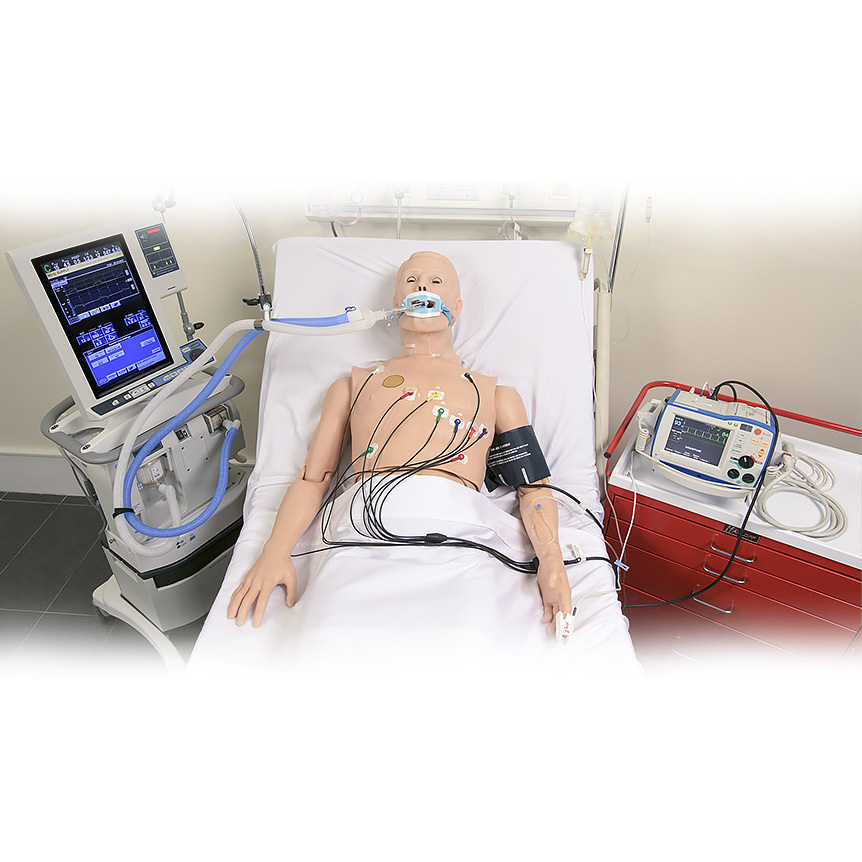
HAL® S3201 Advanced Tetherless Patient Simulator
